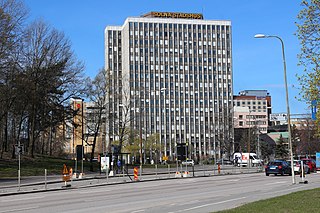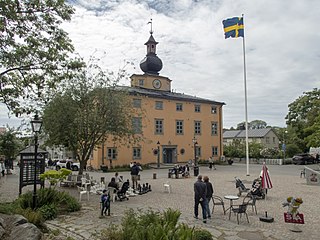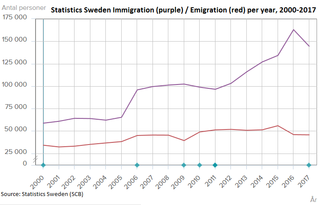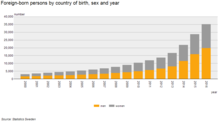
Solna is a primary settlement and a municipality in Stockholm County, Sweden, located just north of Stockholm City Centre. Its seat is located in the town of Solna, which is a part of the Stockholm urban area. Solna is one of the richest municipalities in Sweden.

Danderyd Municipality is a municipality north of Stockholm in Stockholm County in east central Sweden. It is one of the smallest municipalities of Sweden, but the most affluent. Its seat is located in Djursholm and it is located within Stockholm urban area.

Järfälla Municipality is a municipality in Stockholm County in east central Sweden, and is considered a suburb of Stockholm. Its seat is located in Jakobsberg, part of the Stockholm urban area.

Lidingö Municipality is a municipality east of Stockholm in Stockholm County in east central Sweden. Its seat is located on the island of Lidingö. The municipality is a part of Metropolitan Stockholm.

Nykvarn Municipality is a municipality in Stockholm County in east central Sweden. Its seat is located in the town of Nykvarn.

Nynäshamn Municipality is a municipality in Stockholm County in east central Sweden. Its seat is located in the city of Nynäshamn.

Sollentuna Municipality is a municipality in Stockholm County in east-central Sweden, north of Stockholm. Its seat of local government is located in Tureberg, which is a part of Sollentuna urban area.

Sundbyberg Municipality is a municipality in Stockholm County in east central Sweden, just north of the capital Stockholm. Sundbyberg is wholly within the Stockholm urban area and has a 100% urban population.

Vallentuna Municipality is a municipality in Stockholm County in east central Sweden. Its seat is located in the town of Vallentuna.

Vaxholm Municipality is a municipality in Stockholm County in east central Sweden. The municipal slogan is "Vaxholm – the capital of the archipelago", due to its central location in the archipelago. Its seat is located in the city of Vaxholm.

Salem Municipality is a municipality in Stockholm County in east central Sweden. The name traces its origins from Slæm in the 13th century, but was changed to Salem in the 17th century, inspired by the Biblical name of Jerusalem. Its seat is located in Salem.

Upplands Väsby Municipality is a municipality in Stockholm County in east central Sweden, with a population of 38,963 (2010). Its seat is located in the town of Upplands Väsby.

Swedish for immigrants is the national free Swedish language course offered to most categories of immigrants. Immigrants who speak Danish or Norwegian are ineligible for free Swedish tuition through SFI. All other persons who have emigrated to Sweden are entitled by law to Swedish language education.

Health in Sweden has generally improved over time, with life expectancy increasing, and is at a high level in international comparison. Life expectancy in 2021 was 84.8 years for women and 81.2 years for men and it increased 2.3 years on average from 2006 to 2019. However, the health situation varies between groups in Swedish society and equitable health has proven to be a challenge, with level of education, employment status and country of birth being factors that strongly influence health in the Swedish population. The two leading causes of death in Sweden are cardiovascular disease and cancer.

Immigration to Sweden is the process by which people migrate to Sweden to reside in the country. Many, but not all, become Swedish citizens. The economic, social, and political aspects of immigration have caused some controversy regarding ethnicity, economic benefits, jobs for non-immigrants, settlement patterns, impact on upward social mobility, violence, and voting behaviour.

Poles in Sweden are citizens and residents of Sweden who emigrated from Poland.

Somalis in Sweden are citizens and residents of Sweden who are of Somali ancestry or are Somali citizens. A large proportion of these emigrated after the civil war in Somalia, with most arriving in Sweden after the year 2006.
Syrians in Sweden are citizens and residents of Sweden who are of Syrian descent. As of 2019, there were 191,530 residents of Sweden born in Syria, and 50,620 born in Sweden with at least one Syrian-born parent.
Ethiopians in Sweden are citizens and residents of Sweden who are of Ethiopian descent.
Swedish Afghans are citizens and residents of Sweden who are of Afghan descent, part of the worldwide Afghan diaspora.


















